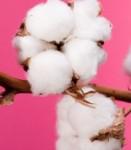 When we are out for shopping, we look for a favorite color, a certain design, a soft and pleasant to touch fabric. We are rarely interested in the life of the clothes we buy. And though, we are more convinced to spend on organic food, we tend to ignore the importance of organic clothing as something “outside” us. Here is the life story of your cotton T-shits from field to shelf. It’s worth knowing it as it will make you shop smarter and choose organic cotton clothes next time.
When we are out for shopping, we look for a favorite color, a certain design, a soft and pleasant to touch fabric. We are rarely interested in the life of the clothes we buy. And though, we are more convinced to spend on organic food, we tend to ignore the importance of organic clothing as something “outside” us. Here is the life story of your cotton T-shits from field to shelf. It’s worth knowing it as it will make you shop smarter and choose organic cotton clothes next time.
Cotton Growing
Conventional Cotton
Cotton fibers come from the cotton plant’s mature seeds. It is a cellulose fiber that has been considered until recently for the most “natural and clean” one. Conventional cotton farming, however, involves a heavy use of synthetic chemicals that seriously harm the environment, the workers and us.
So, what does it take to make a T-shirt? – It takes about 9 ounces of cotton, an average of 17 teaspoons of synthetic fertilizers plus 3/4ths of a teaspoon of active ingredients like pesticides, herbicides, insecticides and defoliants. Apart from the toxic chemicals, it also takes 400 gallons of water to grow the cotton required for an ordinary cotton T-shirt.
Only 2.4% of the world’s arable land is planted with cotton yet it accounts for 24% of the world’s insecticide market and 11% of global pesticides sales, making it the most pesticide-intensive crop grown on the planet. The Environmental Justice Foundation says: “Aldicarb, a powerful nerve agent, is one of the most toxic pesticides applied to cotton, yet it is also the 2nd most used pesticide in global cotton production. A single teaspoonful of aldicarb on the skin would be sufficient to kill an adult.”
Organic Cotton
Soil is of prime importance for organic farming. It is seen as a living system and not simply as a growing medium for plants. In order to keep it healthy and productive, synthetic fertilizers are replaced by compost, efficient nutrient recycling, frequent crop rotations and cover crops.
On the other hand, the options to control weeds are many: hoes and other mechanical weeding implements, crop rotations, planting several crops together (inter-cropping), more efficient use of irrigation water, the use of mulches, and even adjusting the planting dates and densities of their crops.
Finally, to control pests, organic farmers may use beneficial predator insects, crop rotations, inter-cropping, and biological pesticides such as neem oil.
Harvesting Cotton
Conventional Cotton
During harvesting, toxic chemicals are used to defoliate cotton plants to make picking easier. The global consequences are that chemicals pollute ground water and rivers with potentially carcinogenic compounds. Large harvesting machinery compacts the ground reducing soil productivity.
Organic Cotton
Organic methods wait for defoliation to occur from natural seasonal freezing, or stimulate defoliation through water management. Organic cotton is often hand picked, especially in developing countries, without the use of defoliants, machinery, or chemicals. Hand picking also means less waste.
Cleaning & Ginning
Several cleaning steps are required before cotton fiber can be manufactured. The fiber manufacturers remove plant material and other debris by dividing and carding the lint. The waste from this process is a mixture of stems, leaves, soils, and lint.
Cotton is also an important food source for humans and animals. Cotton is comprised of 40% fiber and 60% seed by weight. Once separated in the gin, the fibers go to textile mills, while the seed and various ginning by-products are used for animal feed and for human food, mostly in the form of cottonseed oil. Cottonseed, which is rich in oil and high in protein, is a common ingredient in cookies, potato chips, salad dressings, baked goods, and other processed foods. That’s how the toxic chemicals used in the growing and harvesting phases reach our food.

